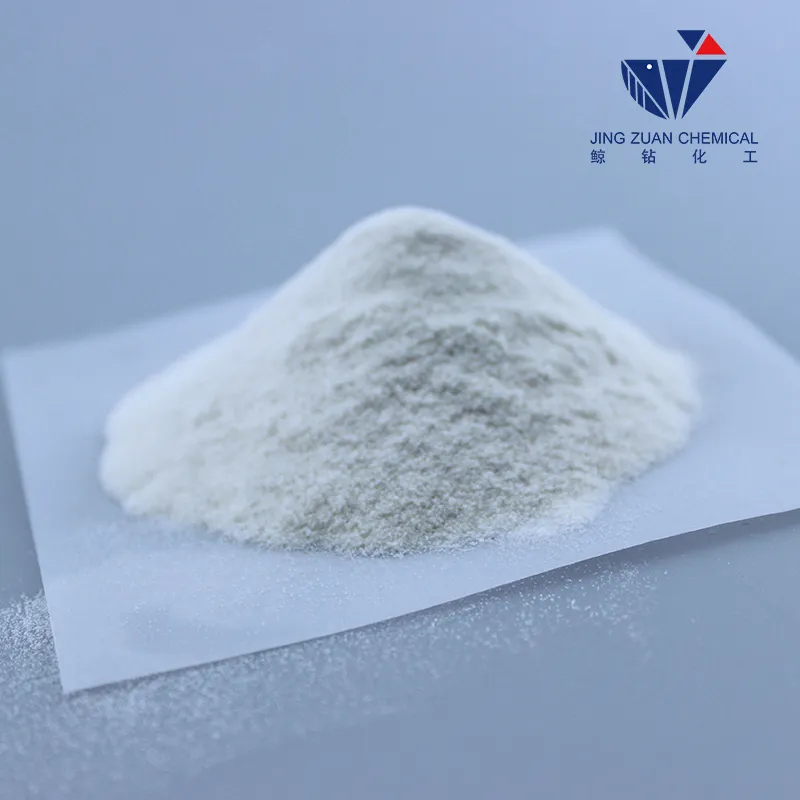
Nov . 17, 2024 15:02 Back to list
hydroxyethyl cellulose solubility
Understanding Hydroxyethyl Cellulose Solubility and Its Applications
Hydroxyethyl cellulose (HEC) is a non-ionic, water-soluble polymer derived from cellulose. It is widely recognized for its versatility and is commonly used in various industries, including pharmaceuticals, cosmetics, and construction. One of the critical factors that influence its application is its solubility in water, which is determined by several factors, including the degree of substitution, molecular weight, and environmental conditions.
Chemical Structure and Solubility
HEC is formed by the etherification of cellulose with ethylene oxide. This reaction introduces hydroxyethyl groups into the cellulose backbone, which affects its solubility in water and organic solvents. The solubility of HEC is primarily influenced by its degree of substitution (DS), which refers to the average number of hydroxyethyl groups per anhydroglucose unit in the cellulose molecule. Generally, a higher degree of substitution enhances the solubility of HEC in water.
The molecular weight of HEC also plays a crucial role in its solubility. HEC is available in a range of molecular weights, and generally, lower molecular weight HEC exhibits better solubility compared to its high molecular weight counterparts. This is attributed to the ability of lower molecular weight chains to interact with water more efficiently, facilitating dissolving processes.
Factors Affecting Solubility
In addition to chemical composition, environmental factors such as temperature and pH can significantly affect the solubility of HEC. Typically, increased temperatures promote the solubility of HEC, allowing the polymer chains to separate and interact more freely with water molecules. Conversely, at lower temperatures, solubility may decrease, leading to gelation or precipitation.
hydroxyethyl cellulose solubility

The pH of the solvent also impacts the solubility of HEC. It is stable in a wide pH range, but extreme acidic or alkaline conditions can lead to hydrolysis of the polymer chains, affecting its solubility and performance. Therefore, maintaining an optimal pH during formulation is crucial to ensure the stability and functionality of HEC in various applications.
Industrial Applications
HEC's solubility characteristics make it a valuable ingredient in many formulations. In the pharmaceutical industry, HEC is often used as a thickening and stabilizing agent in ointments, gels, and suspensions. Its ability to form a transparent gel upon dissolution makes it an ideal candidate for cosmetic applications, providing a smooth texture and enhancing the product's sensory properties.
In construction, HEC is used in cement-based products to improve workability and extend the open time of mortars and plasters. Its water-retaining properties help prevent cracking by allowing for proper hydration of the cement during the curing process, which is essential for achieving the desired strength and durability.
Moreover, HEC plays a role in the food industry, where it is utilized as a thickener, stabilizer, and emulsifier. Its safety profile and regulatory approval make it suitable for various food applications, contributing to improved texture and shelf life.
Conclusion
The solubility of hydroxyethyl cellulose is an essential property that influences its functionality across various industries. Understanding the factors that affect solubility, including the degree of substitution, molecular weight, temperature, and pH, can help formulators optimize HEC-based products for specific applications. As the demand for natural and safe additives continues to rise, the relevance of HEC in formulations is expected to grow, highlighting the need for ongoing research and innovation in this area. Hydroxyethyl cellulose not only exemplifies the intersection of chemistry and practical application but also represents the evolution of cellulose derivatives in meeting contemporary industrial needs.
-
Versatile Hpmc Uses in Different Industries
NewsJun.19,2025
-
Redispersible Powder's Role in Enhancing Durability of Construction Products
NewsJun.19,2025
-
Hydroxyethyl Cellulose Applications Driving Green Industrial Processes
NewsJun.19,2025
-
Exploring Different Redispersible Polymer Powder
NewsJun.19,2025
-
Choosing the Right Mortar Bonding Agent
NewsJun.19,2025
-
Applications and Significance of China Hpmc in Modern Industries
NewsJun.19,2025







